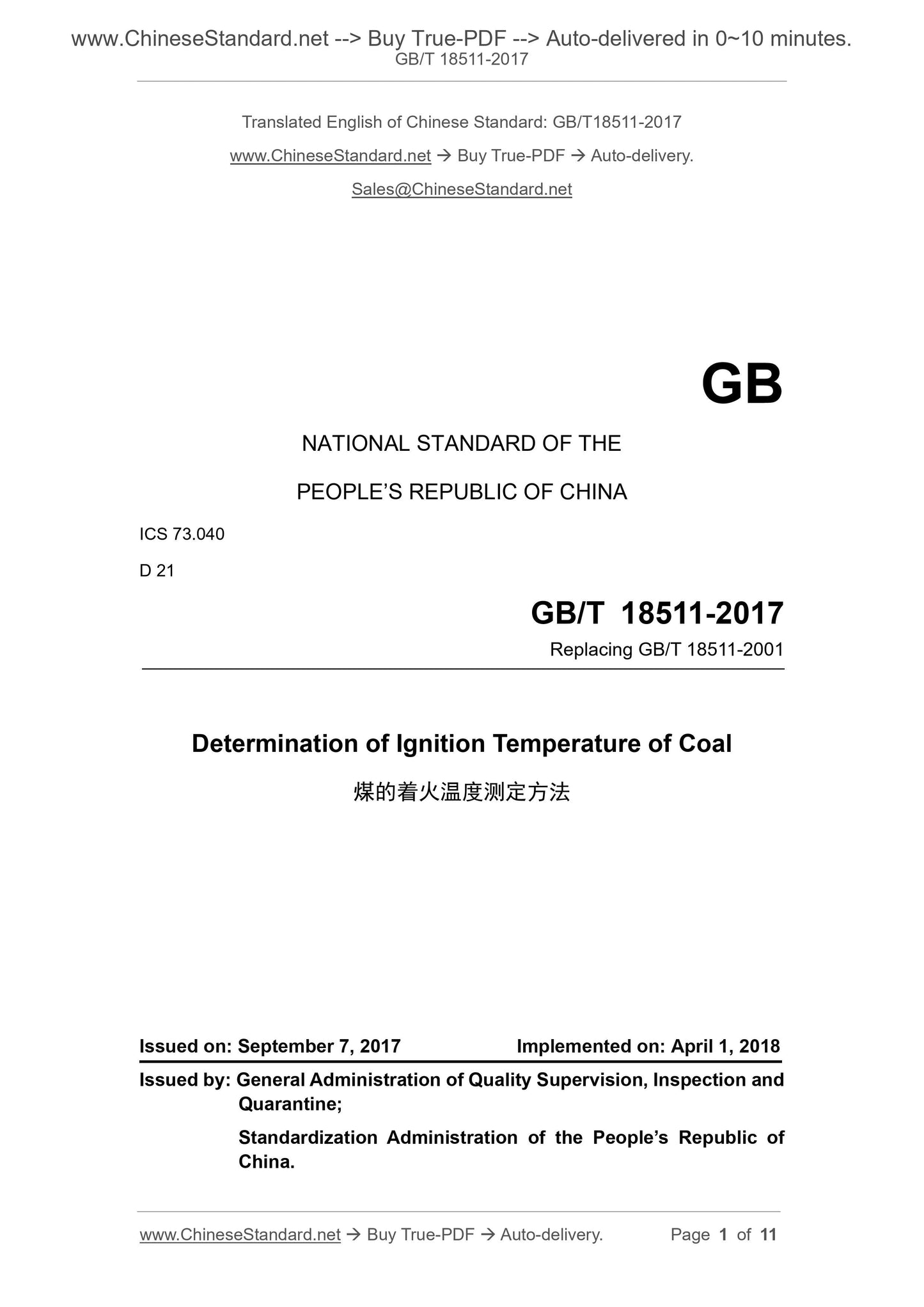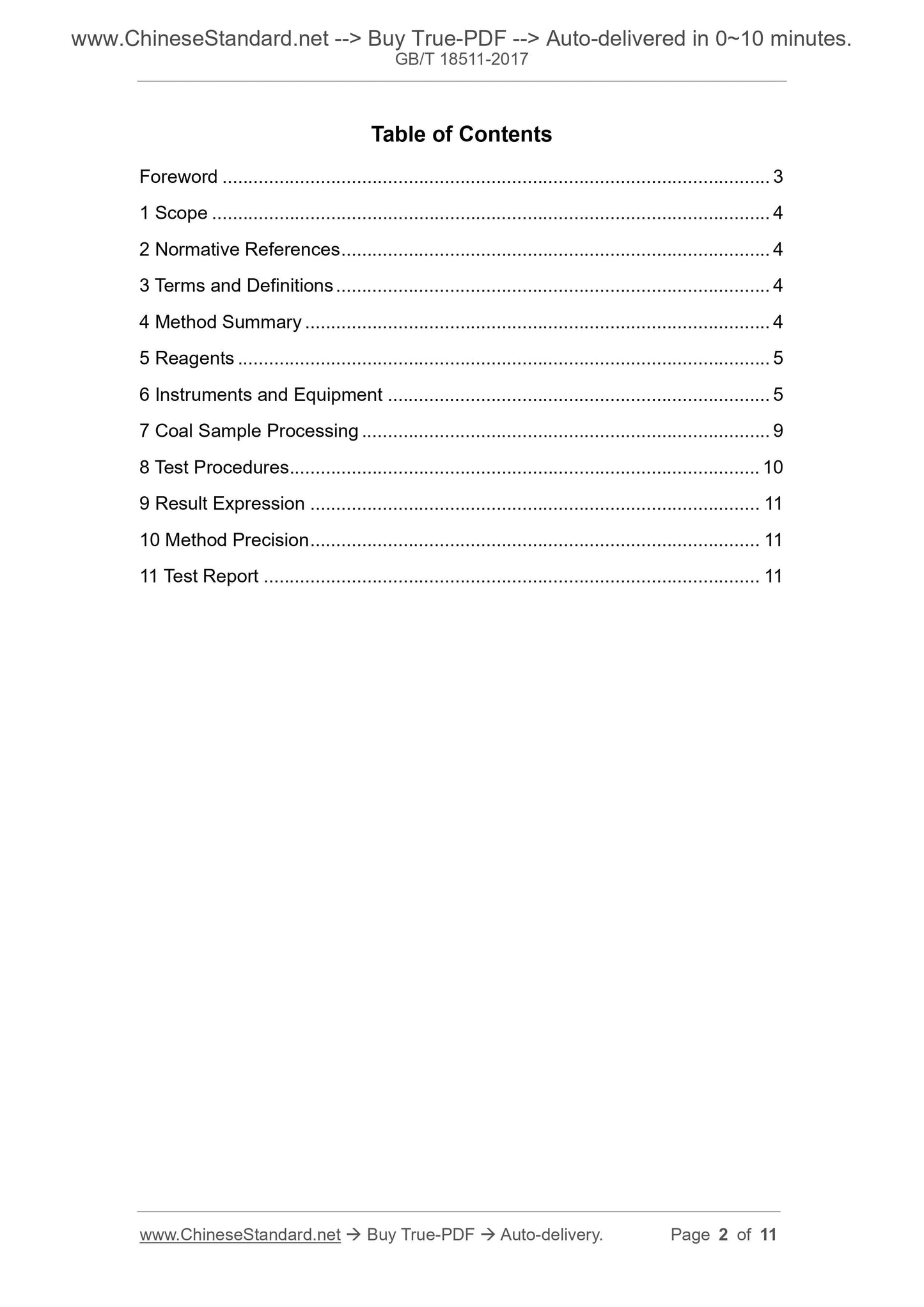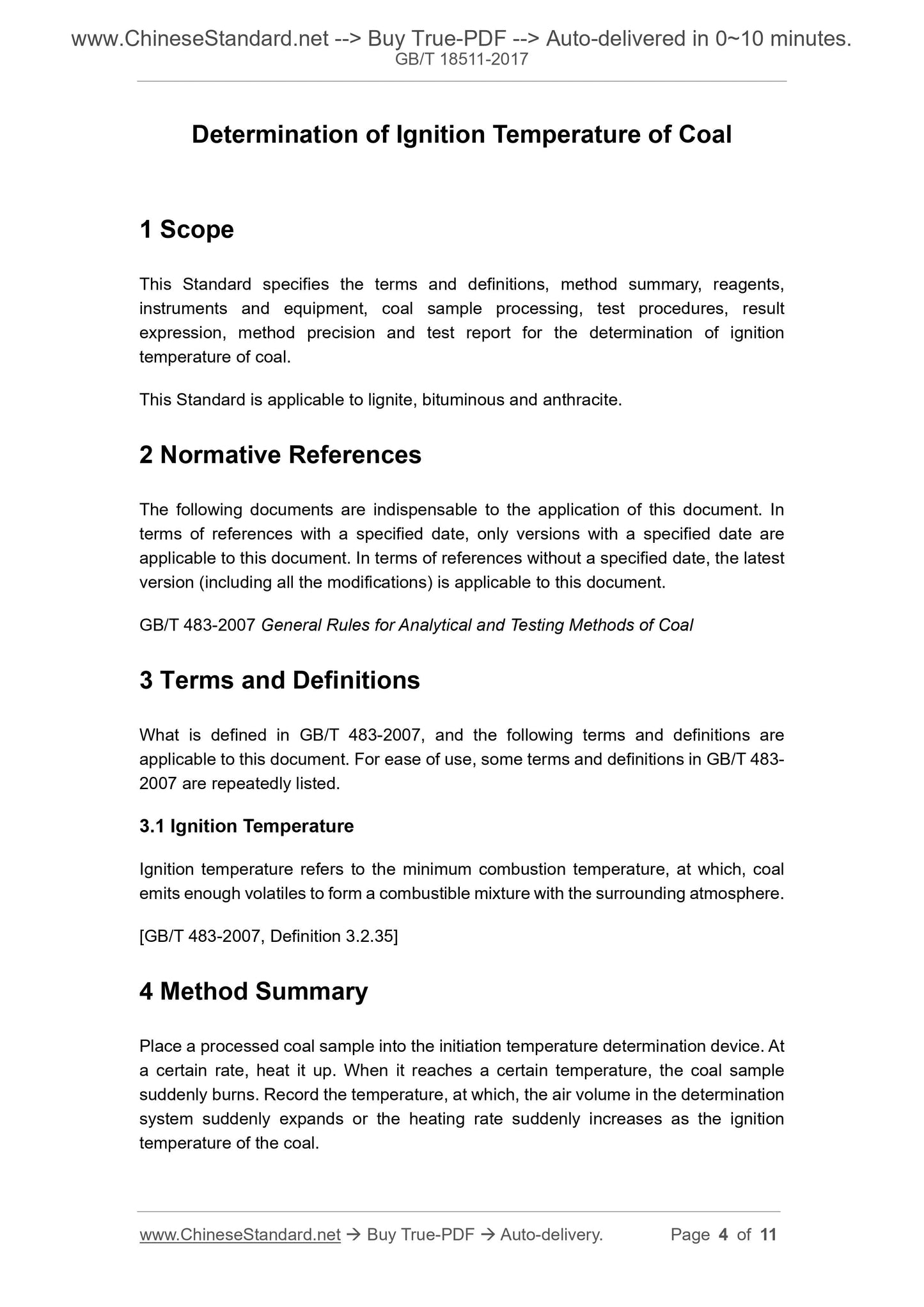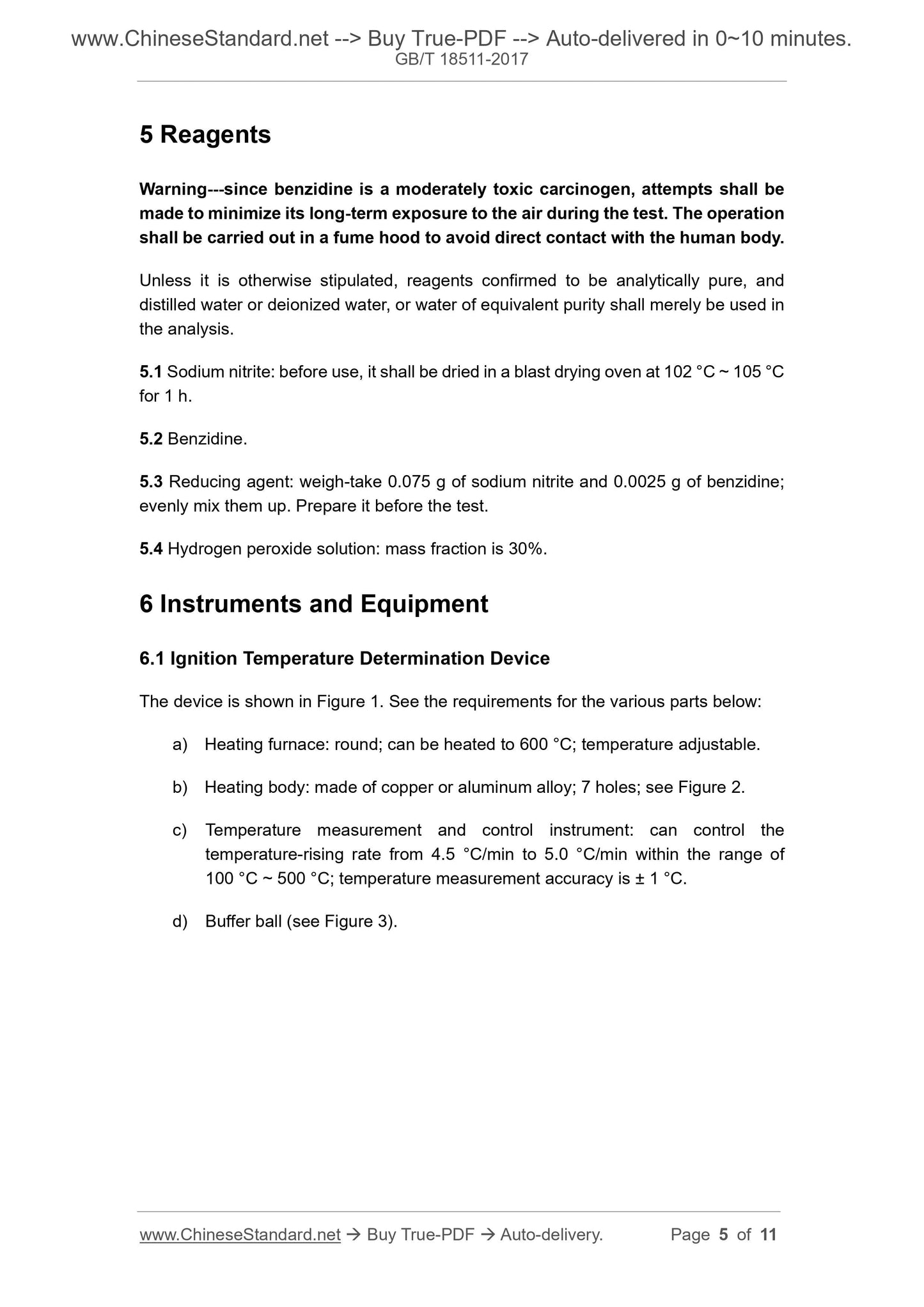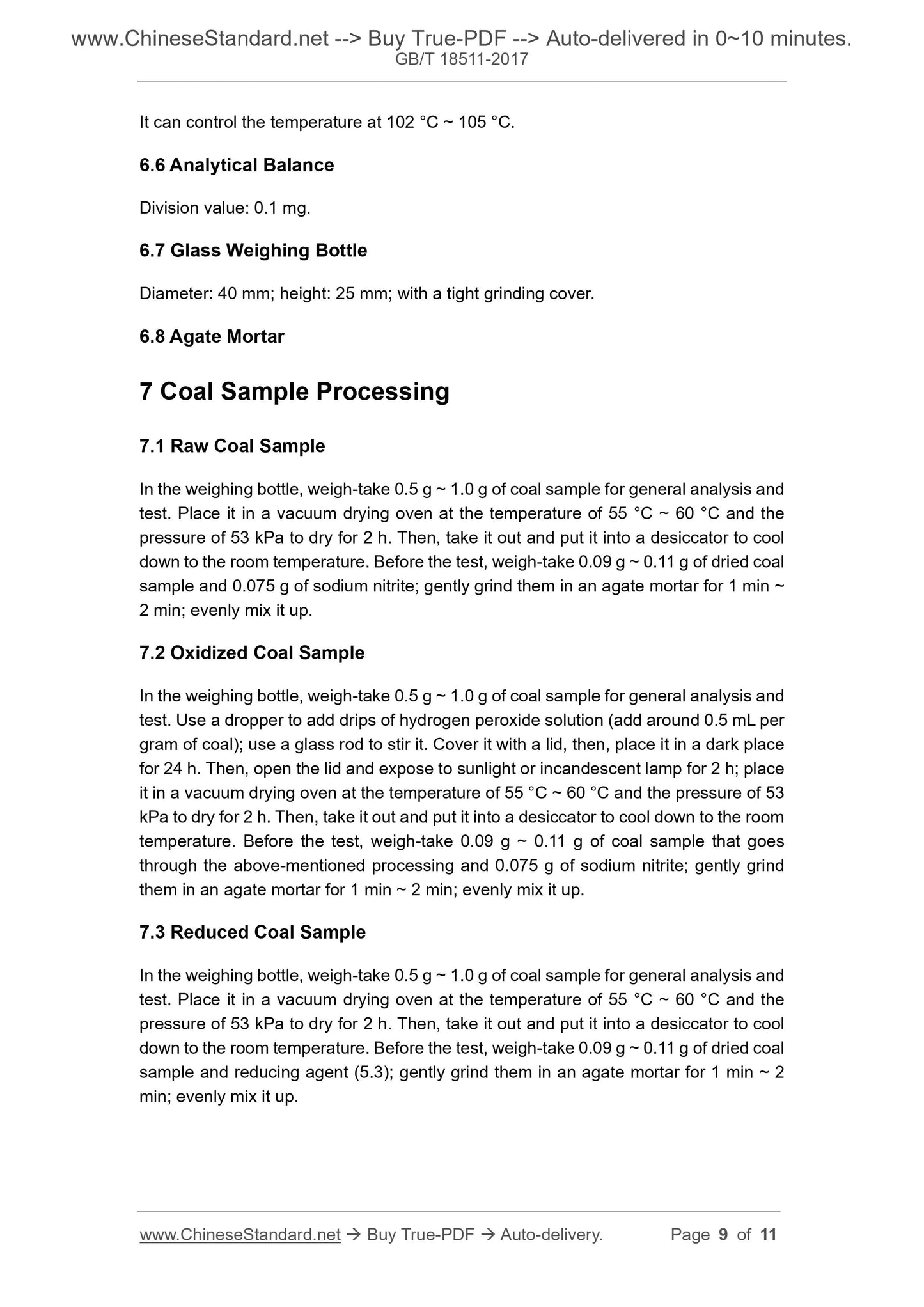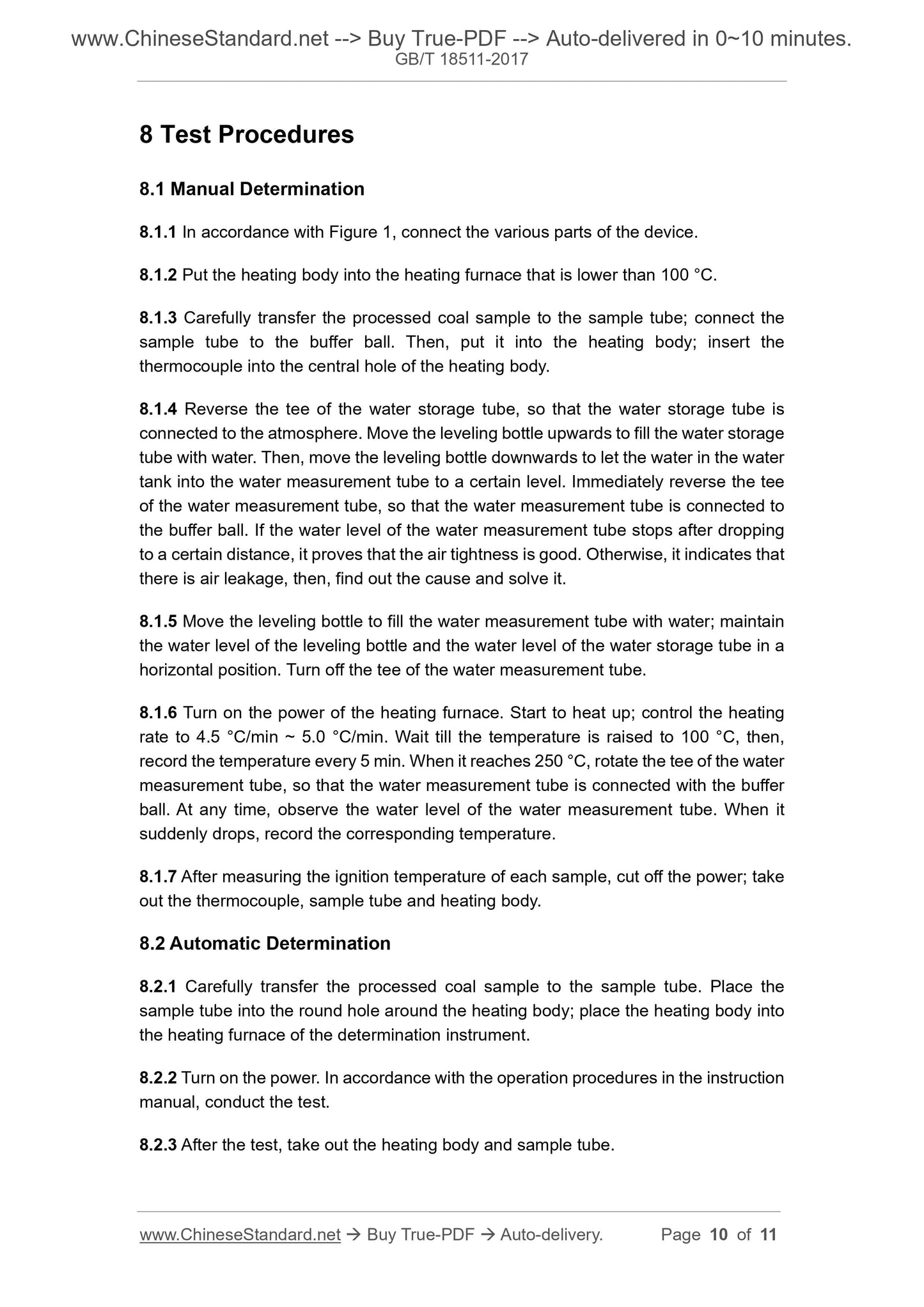1
/
of
6
www.ChineseStandard.us -- Field Test Asia Pte. Ltd.
GB/T 18511-2017 English PDF (GB/T18511-2017)
GB/T 18511-2017 English PDF (GB/T18511-2017)
Regular price
$150.00
Regular price
Sale price
$150.00
Unit price
/
per
Shipping calculated at checkout.
Couldn't load pickup availability
GB/T 18511-2017: Determination of Ignition Temperature of Coal
Delivery: 9 seconds. Download (and Email) true-PDF + Invoice.Get Quotation: Click GB/T 18511-2017 (Self-service in 1-minute)
Newer / historical versions: GB/T 18511-2017
Preview True-PDF
Scope
This Standard specifies the terms and definitions, method summary, reagents,instruments and equipment, coal sample processing, test procedures, result
expression, method precision and test report for the determination of ignition
temperature of coal.
This Standard is applicable to lignite, bituminous and anthracite.
Basic Data
| Standard ID | GB/T 18511-2017 (GB/T18511-2017) |
| Description (Translated English) | Determination of Ignition Temperature of Coal |
| Sector / Industry | National Standard (Recommended) |
| Classification of Chinese Standard | D21 |
| Classification of International Standard | 73.040 |
| Word Count Estimation | 10,180 |
| Date of Issue | 2017-09-07 |
| Date of Implementation | 2018-04-01 |
| Older Standard (superseded by this standard) | GB/T 18511-2001 |
| Issuing agency(ies) | General Administration of Quality Supervision, Inspection and Quarantine of the People's Republic of China, Standardization Administration of the People's Republic of China |
Share
